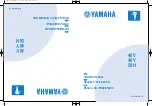
Technical Reference
45
2.5 DMA Channels
Table 13. DMA Channels
DMA Channel Number
Data Width
System Resource
0
8 or 16 bits
Open
1
8 or 16 bits
Parallel port
2
8 or 16 bits
Diskette drive
3
8 or 16 bits
Parallel port (for ECP or EPP)
4
8 or 16 bits
DMA controller
5 16
bits
Open
6 16
bits
Open
7 16
bits
Open
2.6 PCI Conventional Interrupt Routing Map
This section describes interrupt sharing and how the interrupt signals are connected between the
PCI Conventional bus connectors and onboard PCI Conventional devices. The PCI Conventional
specification describes how interrupts can be shared between devices attached to the PCI
Conventional bus. In most cases, the small amount of latency added by interrupt sharing does not
affect the operation or throughput of the devices. In some special cases where maximum
performance is needed from a device, a PCI Conventional device should not share an interrupt with
other PCI Conventional devices. Use the following information to avoid sharing an interrupt with a
PCI Conventional add-in card.
PCI Conventional devices are categorized as follows to specify their interrupt grouping:
•
INTA: By default, all add-in cards that require only one interrupt are in this category. For
almost all cards that require more than one interrupt, the first interrupt on the card is also
classified as INTA.
•
INTB: Generally, the second interrupt on add-in cards that require two or more interrupts is
classified as INTB. (This is not an absolute requirement.)
•
INTC and INTD: Generally, a third interrupt on add-in cards is classified as INTC and a fourth
interrupt is classified as INTD.
The ICH7 has eight Programmable Interrupt Request (PIRQ) input signals. All PCI Conventional
interrupt sources either onboard or from a PCI Conventional add-in card connect to one of these
PIRQ signals. Some PCI Conventional interrupt sources are electrically tied together on the board
and therefore share the same interrupt. Table 14 shows an example of how the PIRQ signals are
routed.
















































